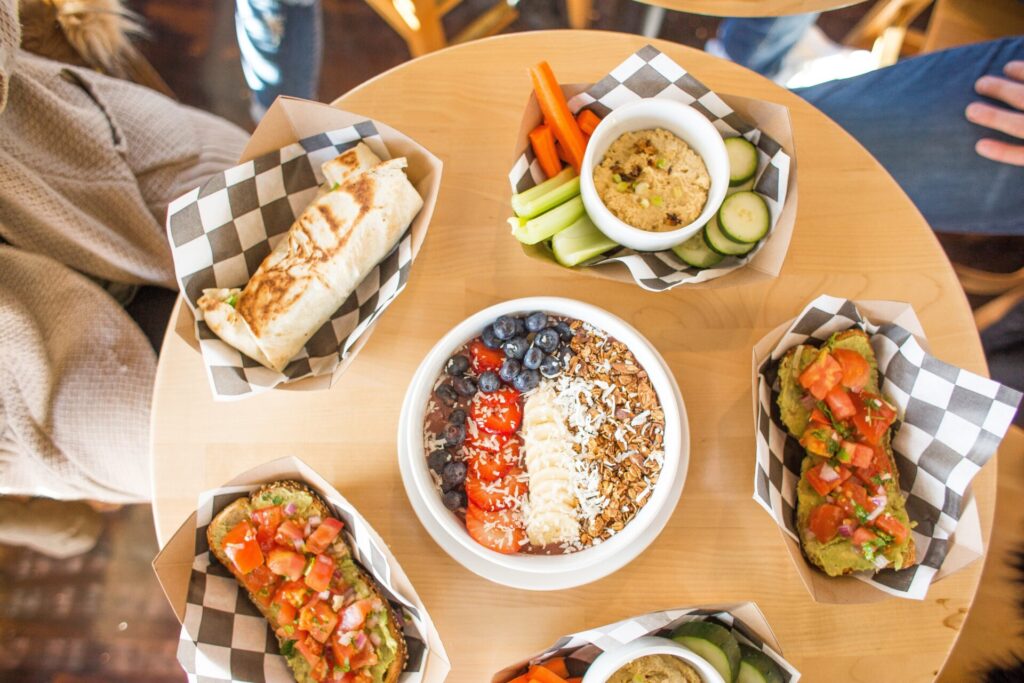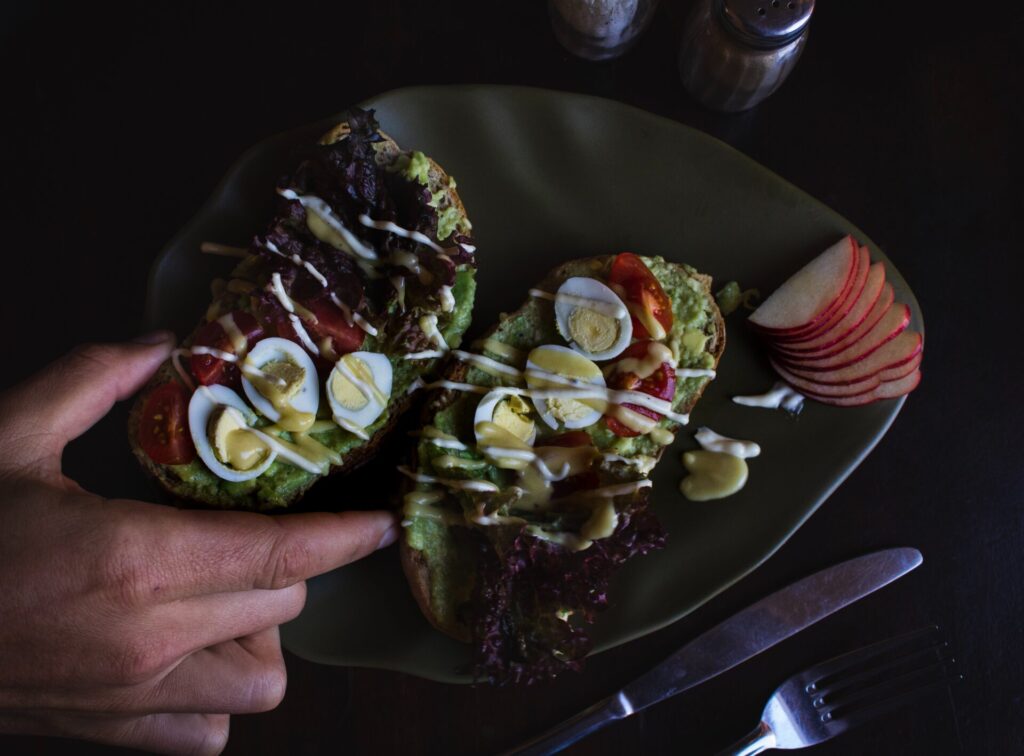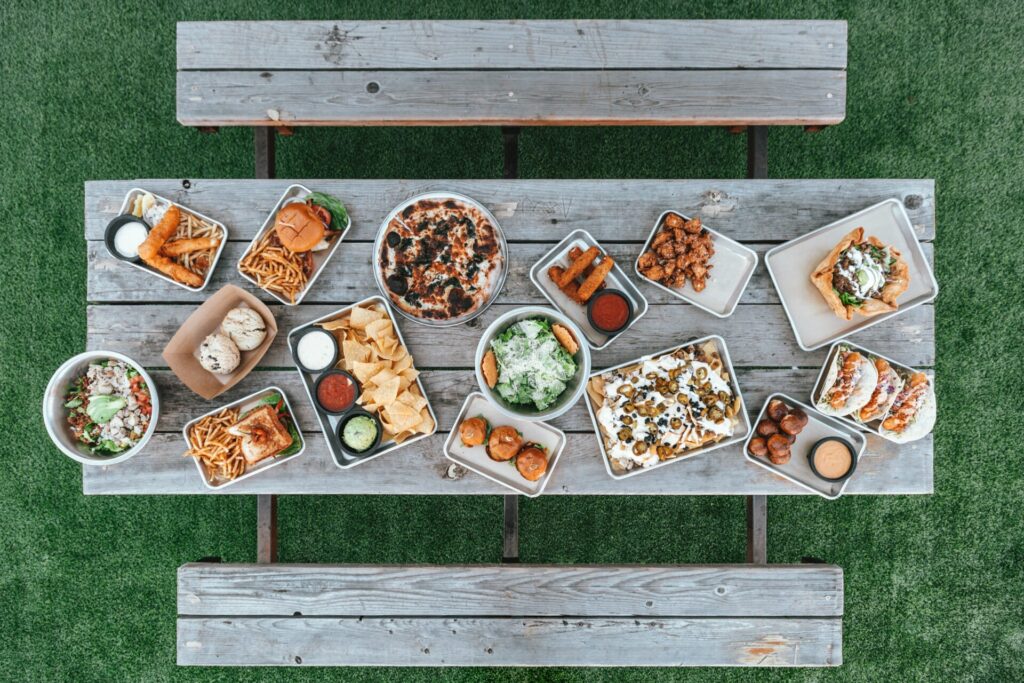Welcome to our guide on meal planning for gym enthusiasts and weight trainers!
If you’re someone who loves to hit the weights and sculpt your body at the gym, you understand the crucial role nutrition plays in your fitness journey. You’ve come to the right place because we’ve tailored this guide especially for you—helping you fuel your body effectively for those intense workout sessions, all while juggling the fast-paced rhythm of everyday life. We get it; balancing a passion for weight training with the demands of daily responsibilities as busy professional is no small feat. That’s why we’ve put together best meal planning tips, focused on supporting your specific nutritional needs as a gym-goer.
What is Meal Planning?

Meal planning for weight trainers is all about organizing and preparing your meals in advance to align with your fitness goals and your daily life. Whether you’re focusing on muscle gain, fat loss, or maintaining your physique, planning your meals ensures that your body gets the right nutrients at the right time. This strategy can be tailored for a day, a weekend, or even an entire week, covering everything from your pre-workout snacks to your post-training recovery meals.
The Benefits of Meal Planning

Fuels Muscle Growth and Recovery
By planning your meals, you ensure a consistent intake of protein, complex carbs, and healthy fats, which are crucial for muscle repair and growth.
Reduces Decision Fatigue
After an intense weight training session, the last thing you want is to stress over what to eat. Meal planning takes the guesswork out of your diet, allowing you to focus on your recovery and relaxation.
Saves Time
As someone dedicated to fitness and also busy daily life, your schedule might be packed with office life, gym sessions, meal prepping, and other commitments. Planning your meals frees up time, letting you concentrate on what matters – your next set of deadlifts or squats.
Manages Stress
Avoid the panic of figuring out your next meal. We’ve all experienced the stress of figuring out what to eat next. A well-planned meal schedule means one less thing to worry about, allowing you to channel your energy into crushing your fitness goals.
Maximizes Intake of Nutrient-Rich Foods
Regular meal planning ensures that your diet is rich in the nutrients essential for bodybuilders and weight trainers – protein, vitamins, minerals, and more.
Saves Money
By knowing exactly what you need for your fitness-focused meals, you avoid impulse buys and stick to your budget. Even though healthy food might be a bit more expensive than other options, it saves you money in the long run.
Increases Food Awareness
Understanding the nutritional value of your food is key. Meal planning fosters a deeper awareness of what you’re eating and how it affects your body and performance at the gym.
Reduces Reliance on Unhealthy Convenience Foods
With a meal plan in place, you’re less likely to reach for processed, quick-fix options that don’t align with your fitness goals.
What You Should Consider when prepare for meal planning

Here are some delicious and nutritious meal ideas you should always consider.
High-Protein Salads
Think chicken, salmon, or tofu salads with a mix of leafy greens and olive oil or vinegar drizzle. These are quick to assemble and great for recovery.
Lean Meat or Fish with Steamed Vegetables
Simple, clean, and efficient for muscle repair.
Stir-fries with Lean Protein and Veggies
Fast to cook and can be prepped in advance. Use lean beef, chicken, or shrimp for a protein boost.
Egg-based Dishes
Omelettes or frittatas with lots of veggies and a bit of cheese for taste.
Protein Smoothies
Great for on-the-go nutrition, especially post-workout. Mix in your favorite protein powder, some fruit, and maybe a handful of spinach.
The Six Steps of Effective Meal Planning for Gym-Goers & business professional

1. Assess Your Workout Schedule
First, take a good look at your workout schedule. Your meal plans should dance to the tune of your training days. High-intensity days might need more carbs, while rest days might be lighter on calories.
2. Use What You Have
Make sure to incorporate any protein-rich foods or veggies that need to be used up. This minimizes waste and saves money.
3. Decide Based on Your Goals
Whether you’re bulking up or leaning out, your meals should align with these objectives. Include plenty of protein sources and adjust your carb and fat intake based on your current training phase.
4. Prep and Shop
Write down what you need for your meals and hit the store. Stick to your list to avoid impulse buys that don’t align with your goals.
5. Prepare in Advance:
Consider meal prepping on your rest days. Cook your proteins, portion out snacks, and chop veggies.
6. Stay Flexible
If plans change, adapt your meal plan accordingly. The key is to stay consistent overall, not perfect every single day.
Find Your Meal Planning Persona

Getting to know your meal planning persona is a game-changer for your eating habits, peace of mind, and wallet. Understanding your unique approach to meal prep is crucial; it tailors your food preparation to your individual lifestyle, tastes, and timetable. It’s all about uncovering a method that simplifies healthy eating, making it feel like a breeze rather than a burden. Whether you’re the kind of person who meticulously plans every meal, someone who prefers a bit of wiggle room, or needs instant solutions in a pinch, pinpointing your meal planning persona paves the way for strategies that genuinely fit you. The result? A more enjoyable and lasting way to handle your daily eats.
Personality 1
Attention, planning pros and organization enthusiasts! If the thought of having every meal (and yes, we’re talking breakfast, lunch, dinner, and snacks) mapped out brings you joy, and if you find delight in putting together detailed shopping lists and scheduling your meals, then Personality 1 is your perfect match.
Personality 2
Fancy a sprinkle of spontaneity in your dining routine? If you’re all for a bit of flexibility but still like the idea of a basic plan, then Personality 2 is your ideal middle ground. Here, you’ve got a foundational plan without feeling tied down.
Personality 3
Ever caught in a culinary conundrum, exclaiming, ‘Yikes! I’ve got nothing planned!’? We’ve all been there. Personality 3 is your culinary hero for those unexpected moments when you need a quick and easy meal solution without the hassle of extensive prep.
How to Create a Meal Plan Based on Your Personality

Personality One: The Absolute Meal Plan
– Make the Time: Use brief moments, like commercials or downtime, to contemplate your meal plan.
– Schedule the Week: Align your meal planning with family and social commitments to ensure you cater to actual needs and reduce food waste.
– Gain Perspective: Acknowledge meals eaten out. Designate days with limited cooking time for simpler dishes.
– Add Favorites and New Meals: Include family-loved recipes and allocate time for experimenting with new dishes when you can.
– Preparation: Repurpose ingredients, cook in larger quantities, get creative with leftovers, and embrace freezing options.
Personality Two: The Semi-Structured Plan
– Focus on Staples: Stock up on essentials like grains, proteins, and veggies.
– Pick Themes: Assign themes to different days, like ‘Meatless Monday’ or ‘Taco Tuesday,’ for mealtime inspiration.
– Balance Variety and Repetition: Rotate meals and leftovers. Keep things fresh without overwhelming yourself.
– Plan for Flexibility: Accommodate for impromptu plans or changes by keeping quick-prep items handy.
Personality Three: On the Fly Meal Plan
Quick Combos:
– Tuna and crackers.
– Greek yogurt with fruit and granola.
– Cottage cheese and pineapple.
– Peanut butter and apple slices.
-Stock Up: Fill your pantry with quick-fix items like canned beans, pre-cooked grains, and easy-to-assemble components.
-Embrace the Freezer Frozen veggies and fruits can be lifesavers. Stock them for those hurried meal moments.
– Be Creative: Mix and match from your available options, creating new flavor combinations.
Conclusion
Gym enthusiasts and weight trainers, we hope this guide helps you create meal plans that fuel your workouts, support muscle growth, and make your fitness journey smoother. Remember, the key is to find a balance that works for your lifestyle, goals, and taste buds. Embrace meal planning as your secret weapon in achieving those weight training milestones. Here’s to healthier, happier, and more efficient meal planning!



